Mammoth Cave and the Mayor
On Tuesday my uncle, cousin and I took a trip to the nearby Mammoth Cave National Park. One of my goals is to see the best national parks along the way and the largest cave in the world (390 miles discovered so far) would certainly meet that criteria. The drive out there passed through Cave City, one of those 1960's style kitschy tourist trap towns that has been holding on by a thread ever since. We passed the dilapidated remains of everything from bumper boats to redneck golf. And, of course, Dinosaur World. It was often hard to tell which attractions were still operational due to the general state of disrepair of all around.
At the park we took the History Tour, a 2 hour journey about 2 miles through the cave that focused on the usage and formation of the cave. We were led by one of the most picture perfect park rangers I've ever seen and he played the part to a T:
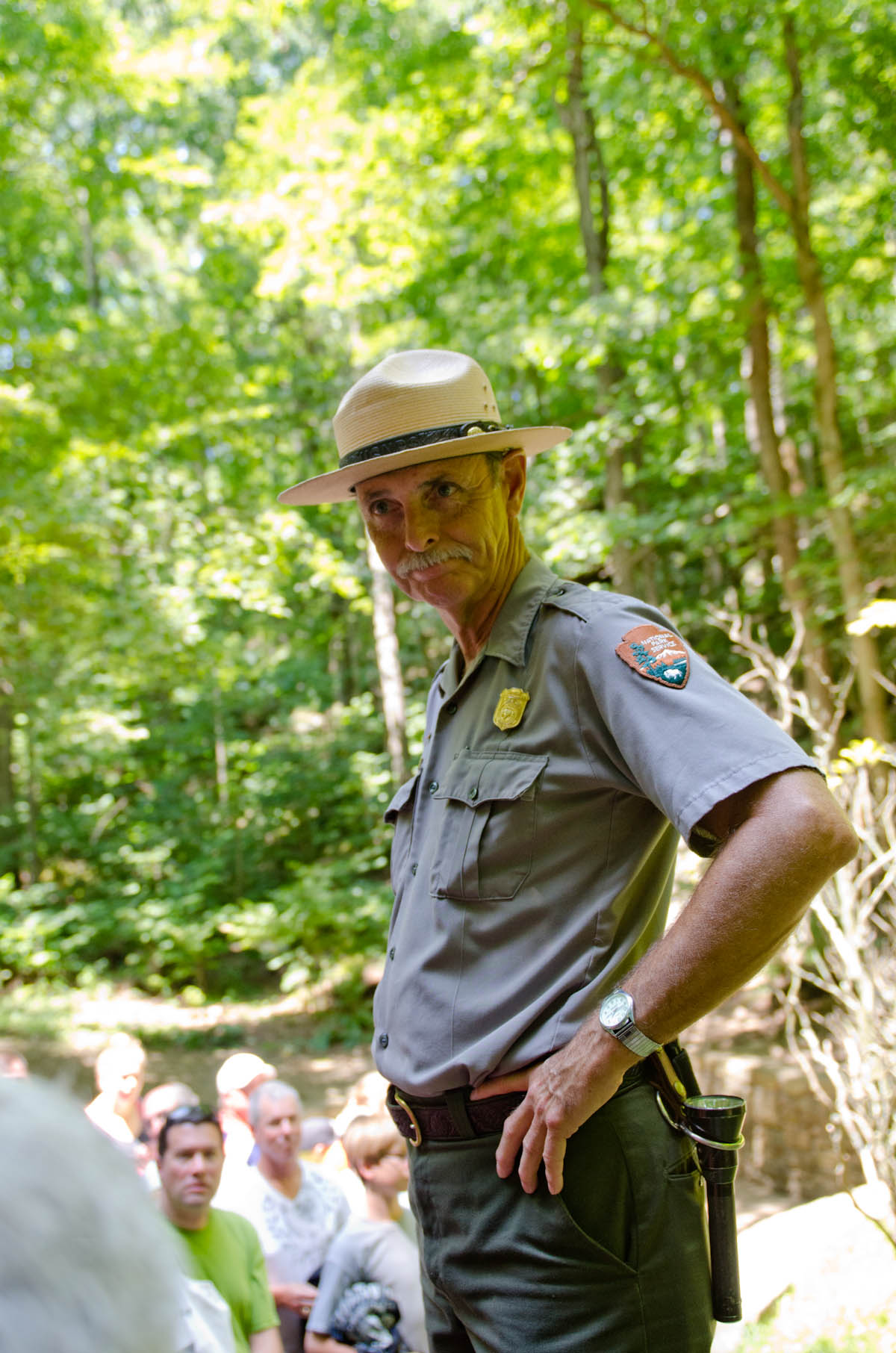
The cave system is about 55 degrees year round and so it breathes with the relative heat or cool of the outside. That day, the almost triple-digit temperatures outside actually forced cave air from its mouth and cooled the nearby forest. This air is apparently replaced in the upper reaches of the cave, where it is simultaneously "breathed in". During the winter, this process is reversed and the outlet vents on the surface can be spotted by the steam rising from their contact with the frigid outside air.
Mammoth Cave has been in use for thousands of years. When it was more or less rediscovered in the early 1800's, they found the burned down butts of reed torches littering the ground inside like leaves in the autumn up to 15 miles deep. I can only imagine what it took for a native to grab a handful of reeds and descend that far into the bowels of the earth. Their sooty torches had actually blackened the ceilings and walls of the early passages.
Later cave dwellers and explorers took to burning their names in the ceiling with candles:
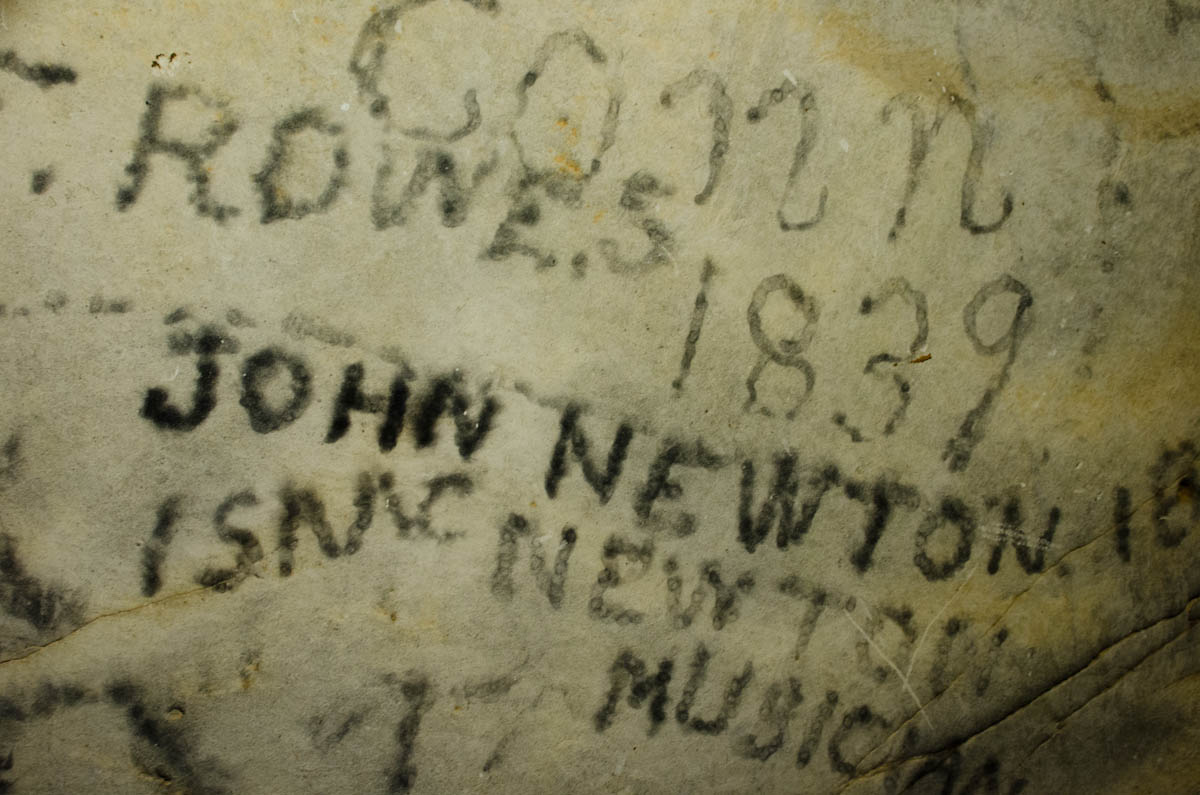
Early after Mammoth's rediscovery, a gentleman by the name of Dupont sensed trouble afoot leading up to the war of 1812 and decided to invest his efforts in a certain chemical that resulted from the unique processes of the cave. It so happened that the bat guano, mixed with the dry dirt below, could be distilled into saltpeter, one of the key ingredients in gunpowder. The hollowed out trees they used to pipe water a quarter mile into the entrance for this purpose are still visible today.
The massive initial chamber, called the Rotunda, looks like something built by otherworldly beings. It opens up to a vast passage on either side and is capped by a flat, circular ceiling that is the underside of a layer of limestone solid enough to support the weight of the rock above it. A view down one of the passageways:
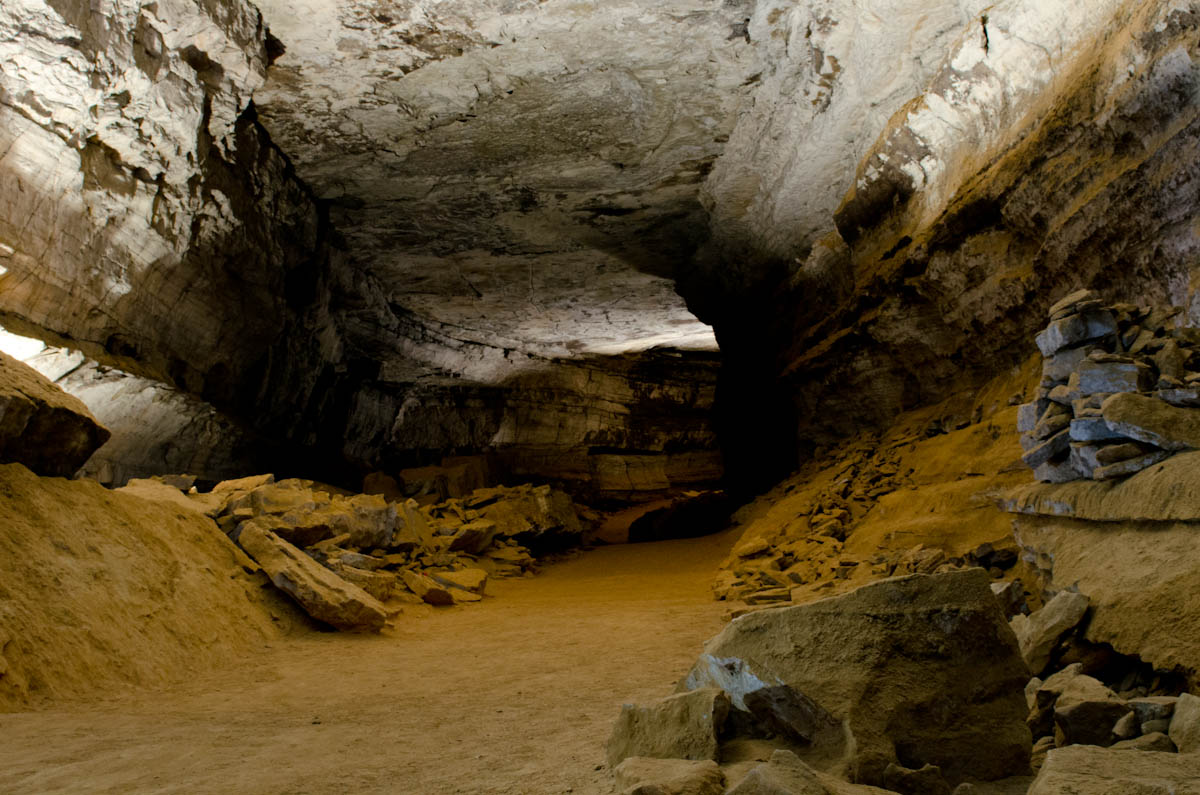
The major difference between Mammoth and other caves, though, is the complete lack of natural formations like stalagmites and stalactites. This is a side effect of the unique geology that has allowed the cave to get so large and to persist for so long. Basically, the cave is formed when water from the surface filters through sink holes and attempts to make its way to the nearby Green River.
A view up one of the sinkholes:
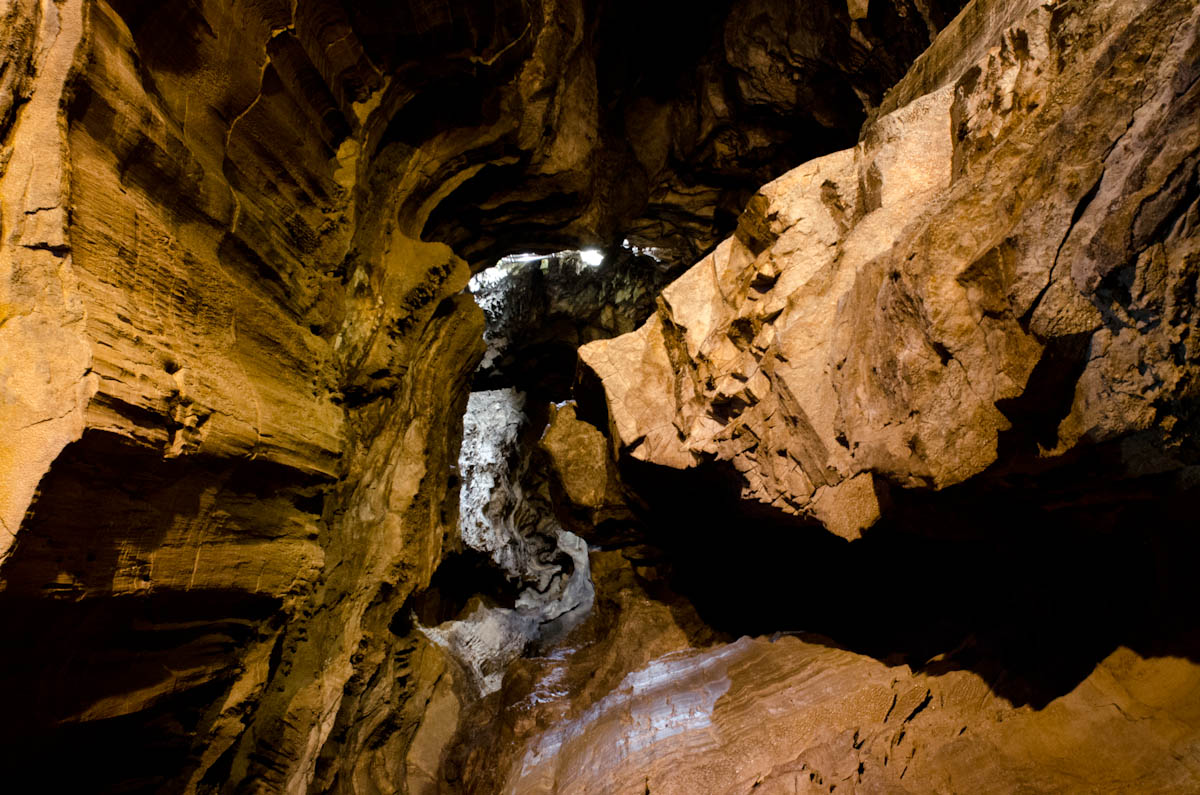
These underground rivers chew through the limestone like in any other cave. The difference with Mammoth is that there is a 50 foot natural layer of sandstone above the limestone which acts like a roof in areas without sinkhole penetration. Without the constant water permeation and drip-drip-dripping to create new formations, the cave is preserved from changing and can continue to grow larger and larger over time.
Traveling through the cave, we descended as low as 300 feet below the ground and almost had to crawl at times. In most places, though, the openings were conveniently just about the right height to walk through (carefully). We learned of the black slave who was the first to cross the 100 foot deep pit atop a log, getting further than any other human ever had before. We also saw where, like many other caves in the area, Mammoth had been used during the civil war for everything from a hospital to a munitions storage facility.
As interesting as the cave was, there's nothing quite like returning to daylight at the end of the tour:
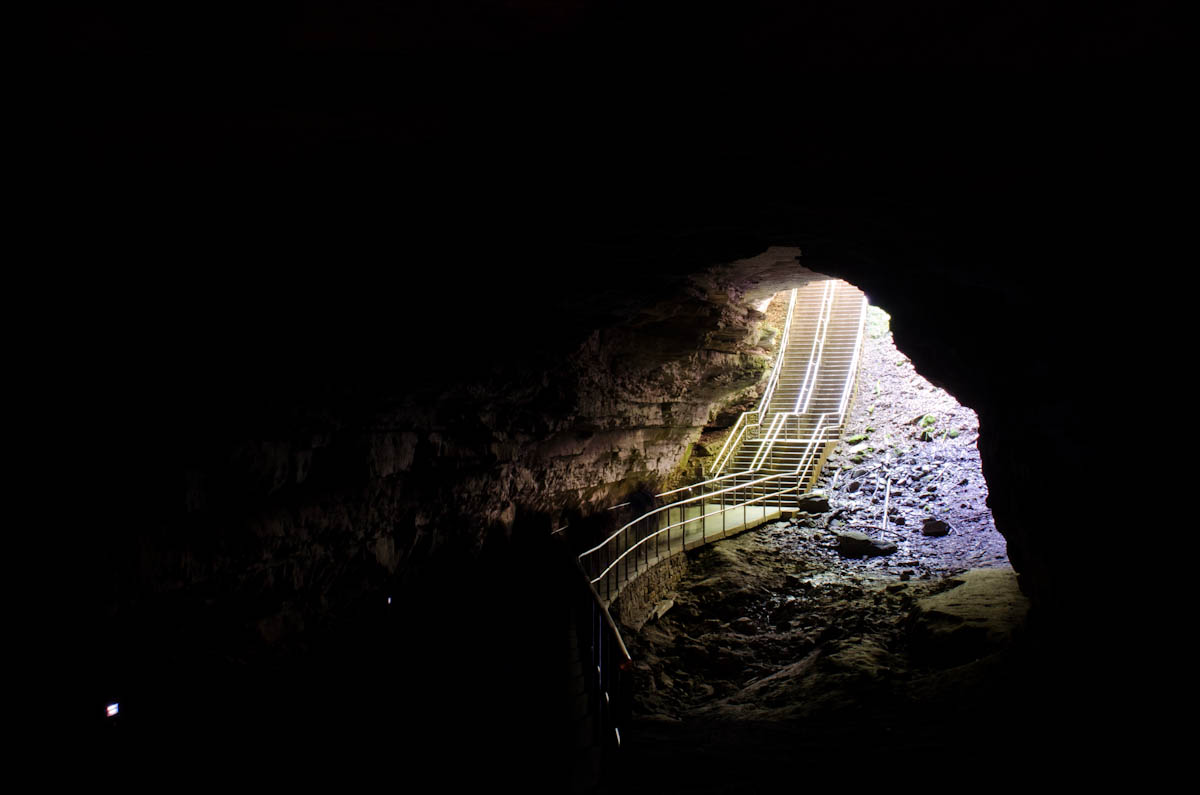
...
Our Mexican food dinner brought back some fond memories of Lupe Tortilla in Houston (the world's best fajita, if you were wondering) and gave me a good chance to ask a lot of questions. My aunt has been the mayor for a few years now and she had a very strong background before that in public administration. I've been interested in finding out more about how municipalities really operate and what it's really like in government.
She's dealt with everything from personal lawsuits (the buck stops with her) to trying to incentivize new businesses to come to town to weeding out inefficiency and residual corruption in the system. I learned a great deal about the human side of government, for better and worse, than I'd ever be able to relate here.
I love those "aha!" moments when you get a new perspective on something and your model of how the world works acquires an interesting new piece. Like the first time you learn to think like a company would and not just as an employee, it was eye opening to finally get all the information I needed to see the world from the local government's perspective. The value of this for someone creating a business down the road should be obvious.






